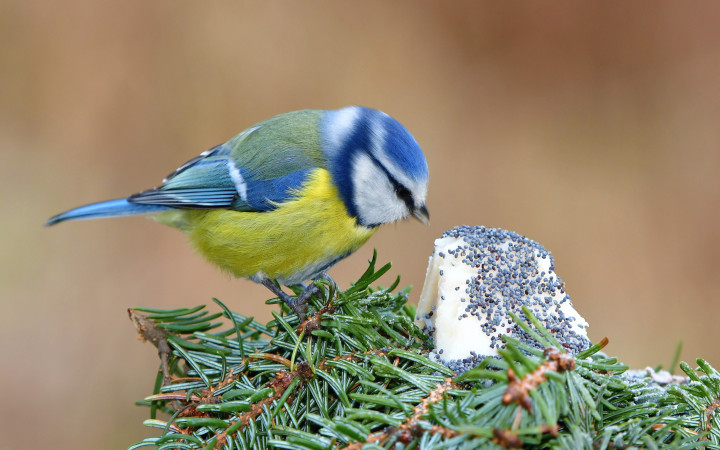Today’s Wonder of the Day was inspired by Ethan. Ethan Wonders, “how do birds know where to go in the winter?” Thanks for WONDERing with us, Ethan!
Brrrrrr! It’s a chilly day here in Wonderopolis. Is it cold where you are? Look outside. Maybe you see snow on the ground or people walking by in heavy coats. Can you spot any animals? You might see a squirrel or a deer. Maybe you can even find a bird!
Many birds migrate to warmer climates during winter. However, some stay put. How do these birds survive the coldest winters? You don’t see any of them wearing jackets. You don’t see heaters or blankets in the trees. How do they do it?
Birds have many different ways they adapt to life in the coldest months. They have a hard time in cold weather because their body temperatures are higher than those of humans. Although exact body temperature varies by species, birds tend to be around 105º F. So it’s hard for birds to maintain that high body temperature in colder weather.
The feathers that cover birds are more than just for beauty. They provide warmth and insulation against colder temperatures. Many birds grow extra feathers in the months leading up to colder weather. This helps them stay warm when temperatures drop.
Some birds also have an oily coating on their feathers. It add to their insulation and also makes their feathers waterproof. Birds can also fluff up their feathers to create air pockets. These air pockets provide even more warmth.
In the months leading up to colder weather, birds often increase their fat intake, too. Increased fat reserves can help even the smallest birds have extra energy. This helps them generate more body heat.
Birds can lose a lot of heat through their legs and feet. Some birds have special scales on their legs and feet that reduce heat loss. They also sometimes stand on one leg or tuck legs and feet into their feathers to minimize heat loss.
On sunny days, you’ll likely see birds bathing in the sun with their backs toward the bright rays. Even when it’s cold outside, the sun can heat a bird’s skin and feathers when they’re sunning. On very cold days, you may see birds shivering. This has the same purpose as when you shiver. It helps increase their body temperature.
In the winter, you may also see smaller birds of a feather flock together. When large flocks of birds crowd together into a tight space, they all benefit from their shared body heat.
Other birds may instead go into a hibernation-like state called torpor. Birds in torpor lower their body temperatures to conserve body heat. This helps them survive the cold, but it also makes them more vulnerable to predators. Their reaction times tend to be lower in torpor.
When you see a bird in the midst of winter, don’t worry! Just because it didn’t fly south doesn’t mean it isn’t staying warm. Birds have their own clever ways of protecting themselves from the cold, just like humans do.
Standards: NGSS.LS1.A, CCRA.L.3, CCRA.L.6, CCRA.R.1, CCRA.R.2, CCRA.R.4, CCRA.R.10, CCRA.SL.1




